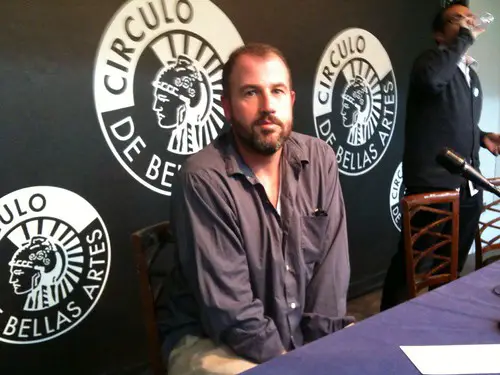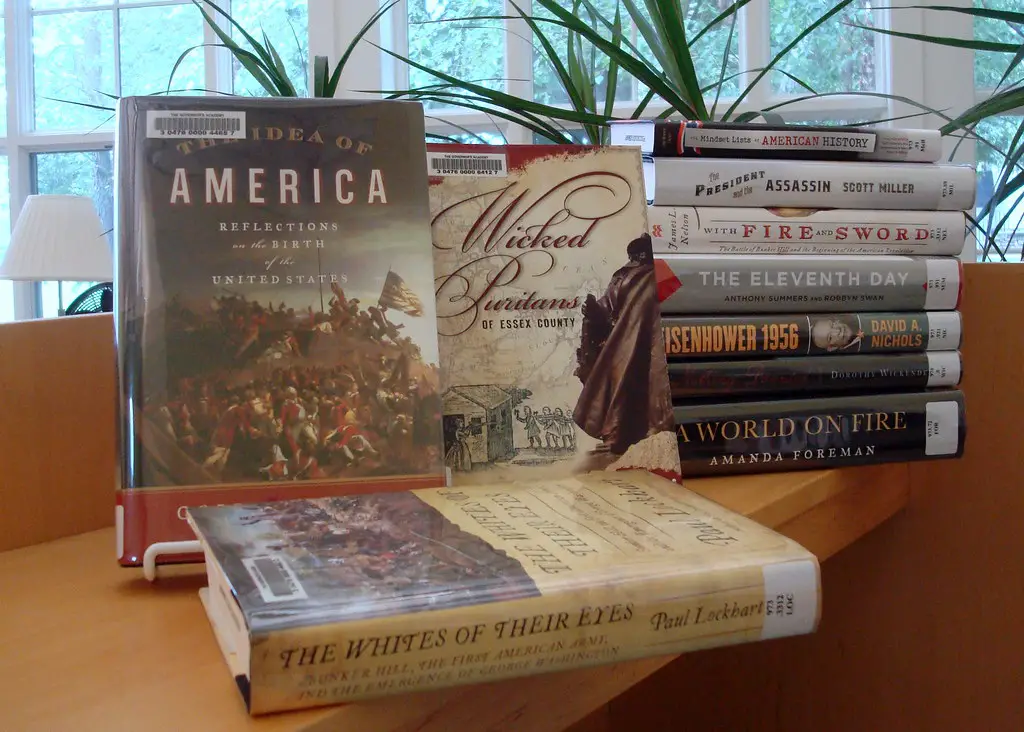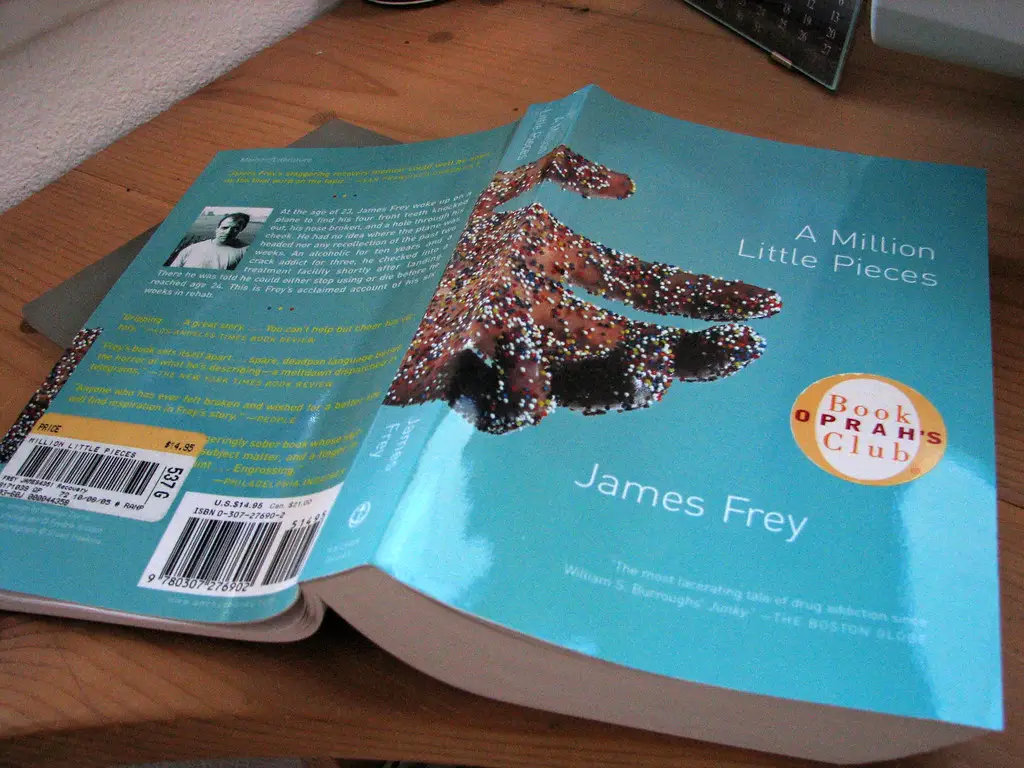During a recent writing workshop, the controversy over the infamous memoir, A Million Little Pieces by James Frey was brought up. It was through the group discussion that I was reminded of the vastly important role ethics plays in writing creative nonfiction.
I love creative nonfiction because it uses many tools and techniques from the fiction writing process to tell real stories in highly entertaining and engaging ways. Writing creative nonfiction is more than writing an article or descriptive essay. Although it can inform, informing is not the main focus. The main focus is to tell a compelling story. The ability to grasp the reader’s attention and take them along for the ride is more admirable than being detailed in facts and evidence.

But then again, at what point do writers cross the line from creative storytelling about real-life circumstances to manipulating the writing process and fabricating the truth? The line may be fine but it is an important determining factor in the respectability of a novel. The outcome of a writer’s actions will determine the weight. Abiding by a code of ethics in the world of nonfiction might gain respect, but as we have learned from authors such as James Frey, disregarding the code can lead to success.
How to Write It…
What makes a story nonfiction? The answer is incredibly straightforward: the truth. A nonfiction story is a true story based on real-life people and events. Creative nonfiction incorporates the emphasis on tools used to tell the true story. Incorporating dialogue, setting the scene with the use of imagery, focusing on character, and applying authorial voice are just some of the ways fiction writing bleeds into creative nonfiction. All of these techniques are used with the intention to entertain.

Writing a good book, no matter the genre requires a writer to keep a reader engaged from beginning to end. Just like that one friend at the dinner party that always has the best stories to tell. Most of the time, it isn’t just the content of the story itself, it is the way in which it is told. Creative nonfiction is the same. A nonfiction writer has a lot more freedom than one might think. They can tell their story however they want to tell it, focusing on what they want to focus on and leaving out what they want to leave out. But in the end, the story and events they are writing about must be real.
Subgenres
Feature
Three of the most prominent subgenres of creative nonfiction are memoir, profile, and feature story. A feature story is a nonfiction piece about a certain topic or event. When writing a feature story, authors heavily rely on research and reliable resources to build content and create a plot that is both engaging and factual. Because feature stories are usually about a time or place that the author was not personally and physically around for, there is a lot more required information needed to start the writing process.
Profile
In the world of nonfiction, a profile piece is a true story about someone other than the author themself. Oftentimes, authors use an interview process to gain reliable content as they write a story about someone’s life experience. Getting to interview the person they are writing about is the best way to tell their story honestly and respectfully. In the event that the subject is not reachable, getting information from close friends, relatives, and colleagues is another great way to build a profile piece. Borrowed from fiction writing techniques, profiles are often written in a third-person narrative.
Memoir
The third and most popular subgenre of creative nonfiction is a memoir. A memoir is a story about one’s own life experience, written in the first person. Readers tend to gravitate toward memoirs because of their raw and powerful authenticity. A memoir is reading a story directly from the source itself. The author is unveiling a part of their life and being in a way that cultivates universal humanness. Because the author is the primary source for a memoir, you would think that it would be the easiest genre of nonfiction to tell truthfully. Yet, it is memoirs that have received the most backlash and ridicule for being fabricated. It seems that authors writing about their own life are more willing to test their ethical boundaries.
Success or Failure?
In the past, the books that have received bad publicity after being outed for being disingenuous are also books that reached a peak level of success before going downhill. It is the exaggeration of the truth that gains their popularity in the first place. This begs the question, is a nonfiction book that reaches the bestsellers list still considered successful even after the world finds out it is fake?

Authors are writing memoirs and adding in portions of their life that did not actually happen in order to tell a better story. So maybe the memoir isn’t so much a memoir but rather a novel based on a true story. Nevertheless, can the books themselves be considered bad because the author lied? And are negative opinions about an author enough to stay away from an interesting story? For some readers, dishonesty doesn’t affect their willingness to read a good book. Some are willing to acknowledge and accept that a nonfiction novel in fact leans more toward fiction.
Related: Memoirs or Fiction?
Along the lines of creative nonfiction storytelling, there are many aspects to consider. There is a code of ethics that makes up the entire essence of what nonfiction is. Then there are the tools for creative writing in and of itself. If an author neglects morality and excels in writing techniques that create a captivating story, they may very well still be considered a great writer. An honest nonfiction writer and a great writer can either remain separate or become one. The leading factor will always come down to the truth.
The Effects
The reality of ethical writing is that its effects are interchangeable. Everyone is entitled to form their own opinion on the matter. An author might embellish the truth and manipulate their audience without a care for the negative reviews and backlash they receive, as long as they sell copies and gain an audience. Some readers won’t mind the oxymoron that the nonfiction novel they are reading isn’t actually real. Personally, I can like and dislike an author or a book for many reasons and it always depends on the circumstance. I choose to stay away from reading nonfiction works that have been outed as false. Knowing it is fabricated immediately takes the spark away for me as the reader. I struggle with overlooking it.

However, I have also read plenty of memoirs that are truthful but have left me disappointed and bored. Honesty does not mean quality. The overall quality of a book is immeasurable. There are many factors that add to and take away from it. What one reader loves another might loathe. It is all about perspective. The ethics of creative nonfiction is a topic worthy of reflection for writers and readers alike. But the subject matter is far from black and white.
Fraudulent Nonfiction Novels
If you are as intrigued by the concept of fake memoirs and false nonfiction as I am, then please enjoy this list of books that have received backlash over the years. Keep in mind that, although these novels are frowned upon in the present day, most of them became bestsellers and received high praise when initially released.
- A Million Little Pieces by James Frey
- Go Ask Alice by Beatrice Sparks
- Love and Consequences: A Memoir of Hope and Survival by Margaret B. Jones
- The Autobiography of Howard Hughes by Clifford Irving
- Honor Lost: Love And Death In Modern-Day Jordan by Norma Khouri
Of this list, the only book I have read is Go Ask Alice. When I read it, I did not know it was fake and I thoroughly enjoyed it. Learning years later that it was a lie was disappointing. But it did not take away from the fact that it was a good read. I felt offended getting played by an author and buying into her lies. But I also don’t think the book would have been as interesting if it wasn’t labeled as a memoir.
Are you willing to overlook fabrication in nonfiction novels? Leave a comment and share your take on the ethics of creative nonfiction.
